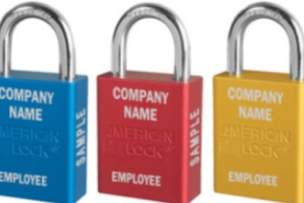Even when your shop complies with OSHA’s Lockout Tagout Safety standard to control hazardous energy, accidents can still happen.
Lockout tagout is Number 5 on the 2018 OSHA Top 10 list of most-cited violations—2,944 violations—which is 10 percent of all violations.
A chief challenge for businesses—small, midsized and large—is how to avoid human error so that employees aren’t harmed or, worse, killed.
Then, there are the potential OSHA fines, which can ramp up to $129,336 per willful or repeat violation.
How do you inform your employees about lockout tagout requirements?
How do you train them?
How do you keep your training and practices up to date?
And how do you get everyone to take ownership for safety?
Here are four tactics to help you address the most critical factor when it comes to safety: your employees.
Tactic 1: Go Deep with Your Documentation
Safety is in the details.
Specify each machine and each technique. And the exact process for each specific lockout tagout procedure must be in your documentation.
Be clear—particularly when more than one person uses a machine or takes part in a metalworking process.
Just posting the OSHA lockout tagout steps is not sufficient, and the information is too general.
Detailed procedures for your shop, shared widely, in many formats, keep everyone—whether they touch machines or not—on the same page. Lean on qualified safety experts—people on your team or with a third-party organization who are specially trained or certified in lockout tagout practices.
Also, be sure that everyone understands the difference between affected and authorized employees, and knows their explicit responsibilities. Authorized team members lock out equipment; other team members may be affected by lockout tagout procedures but have no authority to handle lockouts themselves.
Tactic 2: Get into the Nitty-Gritty When Training
In one OSHA survey, as many as 40 percent of organizations had not trained their workers—something they acknowledged AFTER accidents took place.
Just like with documentation, your training must be unique to your workplace—and manufacturing processes.
That means that after you share documentation, you should run drills on actual equipment, using actual tools, and following your explicit safety and lockout tagout processes.
(And, don’t forget: Repeat your training every six months and any time you add equipment or change processes.)
Tactic 3: Make Lockout Tagout Easy and Obvious
Look at your shop floor. Look at your procedures.
Then, decide how best to provide easy access to lockout tagout gear and where to post information. For instance, tether hasps at common isolation points. They’re at hand that way, and no one has to remember to bring one.
Also use tags and signage with simple messages and bold colors. And, for techniques that involve more than one worker, consider tags with photo IDs.
Make lockout tagout easy to complete—always.
Tactic 4: Keep Leaders Front and Center
For everyone to be responsible when it comes to lockout tagout, everyone needs to be seen following your processes—especially senior managers.
They should take part in all the training—no exceptions.
Managers should also conduct compliance audits and verify lockout testing for zero energy.
Even better, pair a senior manager with a junior team member, who will be the second set of eyes on each verification.
OSHA says when lockout tagout best practices are followed, they prevent 120 fatalities and 50,000 injuries each year.
Unfortunately, the government reports some 200 deaths and 50,000 injuries still occur annually. And, recovery time away from work averages 24 days for each employee.
Every effort to comply with the OSHA lockout tagout standard is a step toward a safer shop floor.
For more expert advice on how to ensure your shop’s safety, visit MSCdirect.com/BetterMRO.






Talk to Us!
Please send more Informations about safety vedeo
66Leave a reply
Your email address will not be published. Required fields are marked *